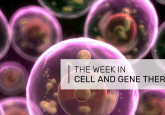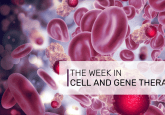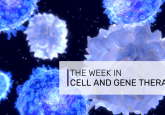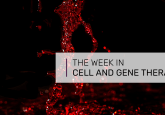CAR-T therapy

What is CAR-T?
Chimeric antigen receptor-T cell (CAR-T) therapy takes a patient’s own T-cells, which coordinate the immune system and respond lethally to invading pathogens, and engineering them to have special receptors on their surface. These artificially-added receptors mean they can recognize and attack cells and foreign bodies which might previously have been hidden from them, such as tumors. Each CAR is engineered specifically to the antigen on that foreign body it needs to find and attack. CAR-T cells are completely synthetic molecules; they don’t exist in nature.
How does CAR-T work?
Firstly, a sample of patient blood is collected and the T-cells separated out. Next, using a delivery vector, most commonly a deactivated virus, the engineered CARs are attached to the T-cell surface. Hundreds of millions of CAR-T cells are needed for the final dose, so next the CAR-T sample is expanded. Finally, the CAR-T cells are infused back into the patient, where they can seek out and target the antigens the CARs were programmed to hunt for.
History of CAR-T
Immune cells were demonstrated to have the ability to target and kill cancer cells as early as 1960 but immunotherapy wasn’t successfully administered until 1973, when bone marrow transplants were used to regenerate blood cell supplies following chemotherapy. Just a few years later, in 1986, tumor-infiltrating lymphocytes were used to treat patients at the National Cancer Center. MIT (MA, USA) proved to be the site of the first attempts at T-cell engineering, starting in 1992, and just a year later, the first CARs were developed; however, these did not persist long enough in the body after administration for an effect to be seen.
The first effective CAR-T cells were not seen until 1998. Various milestones were checked off throughout the 90s and early 00s, and in 2013, the regenerative medicine industry was able to read the results of the first ever human clinical trial utilizing CAR-T therapy. Here, CD19 CAR-T cells were used to treat adults with acute lymphoblastic leukemia (ALL), an aggressive form of cancer which had very few treatment options and was the leading cause of death in childhood cancer patients.
In 2017, CRISPR was used to further optimize CAR-T cells, improving their effectiveness and later that year, the FDA gave the first CAR-T therapy its approval. Nowadays, further progress is being made to improve the effectiveness and safety of the latest generation of CAR-T therapies, and applying them to more and more types of cancer.
Featured content
CAR-T therapy and historical trends in effectiveness and cost–effectiveness of oncology treatments
In this review, published in the Journal of Comparative Effectiveness Research, learn how CAR-T effectiveness and cost compares with traditional anticancer treatments.
CAR-T therapy has demonstrated enormous promise in recent years but despite numerous technical advances remains very expensive per dose. In this research article, published in the Journal of Comparative Effectiveness Research, Baumgardner et al used the Cost–Effectiveness Analysis Registry of the Tufts Medical Center (MA, USA) to assess effectiveness and cost-effectiveness compared with other recent anticancer treatments.
In the study, the team from Precision Health Economics (LA, USA) and Novartis Pharmaceuticals Corporation (NJ, USA) used registry data, the Institute for Clinical and Economic Review’s analysis of CAR-T therapies and information from the FDA to conduct graphical and multivariable analyses.
Effectiveness of CAR-T therapy could be indicated by presence of stem cell memory T cells
Having studied the effectiveness of CAR-T therapies in children with leukemia, researchers and clinicians at University College London (UCL) and Great Ormond Street Hospital (both London, UK) have discovered a subset of T cells that are likely to contribute to the success of the treatment. The study has been published in Nature Cancer.
Women to Watch: translating CAR-T therapies from the lab to the clinic with Dr Rayne Rouce
Dr Rouce is a pediatric oncologist and physician–scientist at Baylor College of Medicine and Texas Children’s Hospital (both TX, USA) focused on translating novel immunotherapies from the laboratory to the clinic. Specifically, she leads clinical trials of first-in-human genetically or otherwise modified T cells (CAR and virus-specific T cells) in patients with relapsed or refractory leukemia and lymphoma. In this interview, find out how she has worked in the laboratory and has partnered with other scientists to assist in the translation of these exciting therapies into the clinic.
Infographic: Allogeneic CAR-T
Discover how allogeneic CAR-T developers and manufacturers are producing the latest advanced therapies in this free infographic.
As part of our Spotlight on allogeneic CAR-T, we surveyed the regenerative medicine community to find out what allogeneic CAR-T therapies they were developing, the challenges they were facing and how they thought the field might evolve in the future. What is the most common cell culture media used? Do manufacturers want more standardized raw materials, more automated processes or both?





